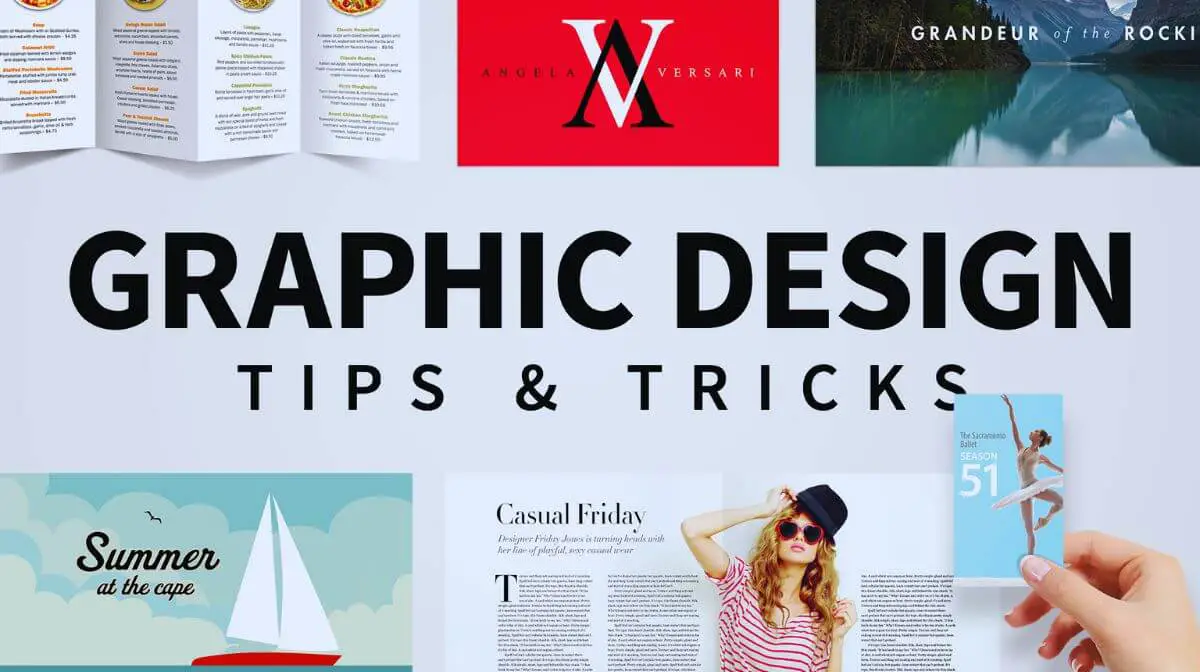Have you ever wondered how some logos and designs manage to captivate your attention and tell intricate stories within a seemingly simple image? The answer lies in the power of negative space, a design technique that can elevate your creations to a whole new level. In this blog, we’ll explore the mesmerizing potential of negative space and how you can harness it to craft logos, posters, and marketing materials that leave a lasting impact.
Unveiling the Ambigram: Negative Space in Action
Let’s begin with a fascinating example. Look at the familiar Harry Potter logo—something seems different, right? This ingenious transformation is called an ambigram, a brilliant application of negative space. Ambigrams hold a unique charm as they can be read from different angles or orientations, all stemming from the clever manipulation of negative space. This isn’t just a design trick; it’s an artistic feat that relies on symmetry and imagination.
Crafting Ambigrams: A Quick Peek into the Process
Creating an ambigram involves utilizing negative space to shape letters with dual meanings. To grasp this concept, let’s outline and ungroup the characters. Imagine crafting letters that can be flipped or rotated to convey the same message. By manipulating anchor points and aligning elements precisely, you can achieve this captivating effect. The thrill of experimenting with ambigrams rekindles the essence of creative graphic design, sparking a sense of playfulness and discovery.

Harnessing Dual Interpretation
Negative space can also give birth to dual interpretations within a single design. A striking example is a design portraying two individuals—one that enthusiasts of pop culture may recognize. Cleverly placed, these designs provoke intrigue and engagement. Similarly, an ice cream marketing design exemplifies how negative space creates illusions that become indelible. What initially appears as one image reveals another upon closer inspection. The art lies in positioning elements to evoke varying perceptions.
Infusing Emotion through Negative Space
Emotion is the heartbeat of design, and negative space provides a compelling canvas for expressing feelings. Consider a logo for a bicycle race that seamlessly integrates the sun within the typography. The emotional response is twofold—the sun symbolizes determination, while the bike signifies the racing spirit. Creating an emotional impact through negative space involves strategically placing elements to evoke specific sentiments.
Storytelling through Subtraction: Case Studies
The fusion of negative space and storytelling is nothing short of mesmerizing. Take the African Child Organization’s logo, for instance. Deconstructing it and piecing it back together in unexpected ways uncovers a powerful narrative of hope. A visual story unfolds, merging Africa’s shape with a hopeful child’s gaze. The emotion conveyed resonates deeply with the organization’s mission.
Quality and Concealment: Hidden Meanings
Hidden meaning, born from negative space, adds a layer of intrigue to designs. You’ve likely encountered logos that reveal hidden letters upon closer inspection. The Toyota emblem is a prime example, secretly spelling out the brand name. Even Toblerone’s iconic logo incorporates a hidden bear in its mountain motif. This technique isn’t limited to logos; it extends to posters as well. By incorporating hidden meanings, you invite viewers on a journey of discovery, engaging them in an exciting mental puzzle.

The Final Revelation: Unveiling the Design’s Magic
Negative space isn’t just about visual aesthetics; it’s about creating a deeper connection with your audience. The interplay of form and emptiness, imagery and absence, can evoke powerful emotions and thoughts. With each well-placed stroke or intentional gap, designers have the ability to captivate, inspire, and resonate.
Embrace the enchanting realm of negative space in design. It’s a universe of endless possibilities where logos become narratives, posters spark curiosity, and marketing truly resonates. By mastering this technique, you’ll tap into the hidden language that lies within shapes and spaces, weaving stories that linger in the minds and hearts of those who experience your creations.
Frequently Asked Questions (FAQs)
What is graphic art technique?
Graphic art mostly includes calligraphy, photography, painting, typography, computer graphics, and bindery.
What is in graphic design?
The art and practice of planning and projecting ideas and experiences with visual and textual content.
Why is graphic design important?
It helps to communicate effectively with the audience because visual aids are better at conveying ideas.
Related Article:









